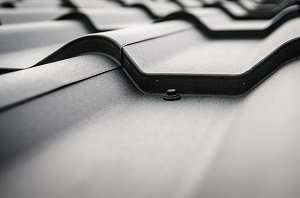New evidence submitted to Grenfell Tower Inquiry on cladding reactivity

A University of Reading chemist has written to the Grenfell Tower Inquiry following chemical tests on aluminium cladding panels, carried out for a BBC current affairs programme.
The experiments, carried out by Professor Laurence Harwood, showed a violent reaction when water was sprayed onto heated aluminium cladding, of a type similar to those used on the Grenfell Tower.
The experiment was conducted for BBC South's 'Inside Out' programme, which is due to be broadcast on BBC One in the South at 7.30pm on Monday 2 October. The programme makers had asked Professor Harwood, who is Director of the Chemical Analysis Facility at the University of Reading to explore how the panels used on high-rise buildings in Portsmouth and elsewhere could be a fire risk, despite having originally passed safety tests.
Professor Harwood found that a violent reaction occurred when he directed a fine spray of water onto the aluminium cladding sheets that had been heated to temperatures above 300 C. This reaction produced more heat as well as hydrogen, which itself will burns violently to produce more heat and water in the form of steam.
In the experiment, as the aluminum burnt away, the polyethylene inner layer became exposed and also began to burn. Professor Harwood showed that the polyisocyanurate insulating foam underneath the aluminium cladding could absorb and hold water.
Professor Harwood said he had written to Sir Martin Moore-Bick, chairman of the Inquiry, to inform him of his findings in advance of the programme airing.
Professor Harwood said: "While I knew something about the reactivity of aluminium, I was genuinely taken aback the first time I tested my proposal in the laboratory. I wasn't expecting such an intense reaction when I sprayed water onto a panel that I had heated with a blow torch.
"The presence of water absorbed by the polyisocyanurate foam, over a lengthy period of exposure to the elements, could play a significant role in accelerating a cladding fire by causing hot aluminium to react violently, generating heat and hydrogen. The latter would then burn violently to produce more heat and steam, which would then allow polyethylene inner layers to be exposed over a large surface area, in turn burning to produce more heat and more steam, setting up a feedback loop and causing a runaway fire.
"This may explain why cladding removed from a number of buildings may have failed fire retardancy testing following the Grenfell Tower fire, despite the individual components having been found to be compliant with requisite fire regulations by the manufacturers."
A detailed description of Professor Harwood's investigation has been submitted to the Grenfell Tower Inquiry.
Provided by University of Reading



















